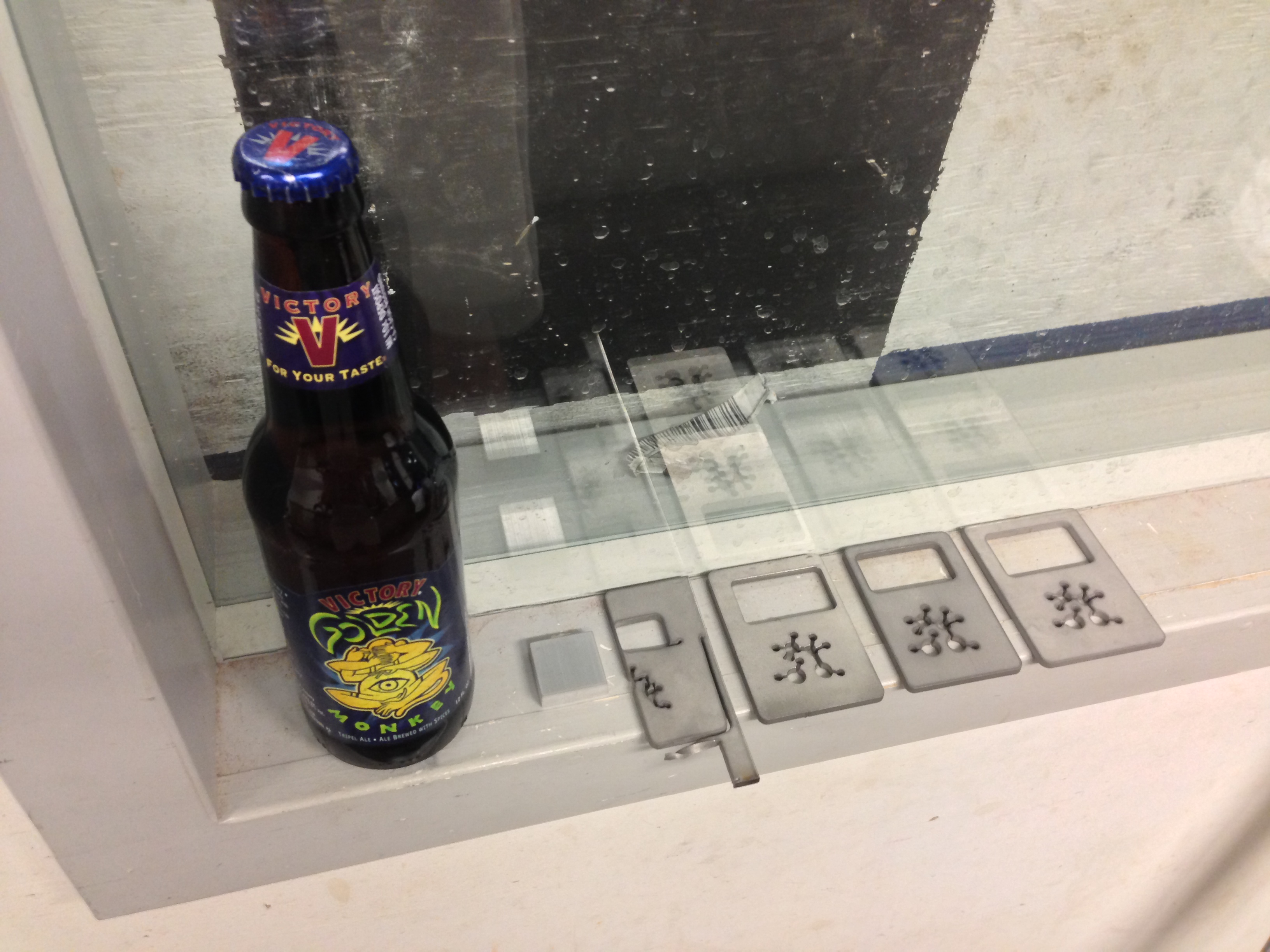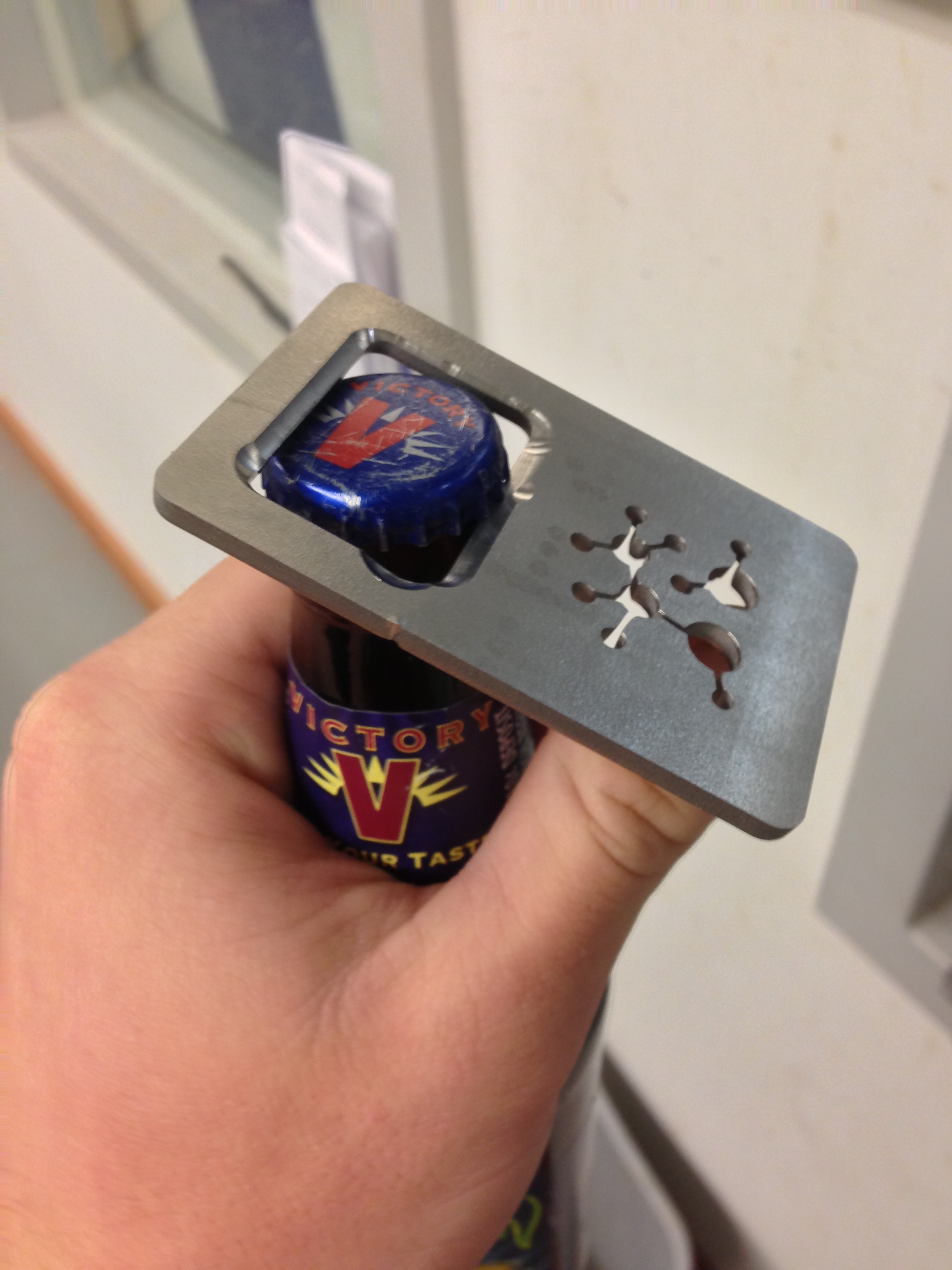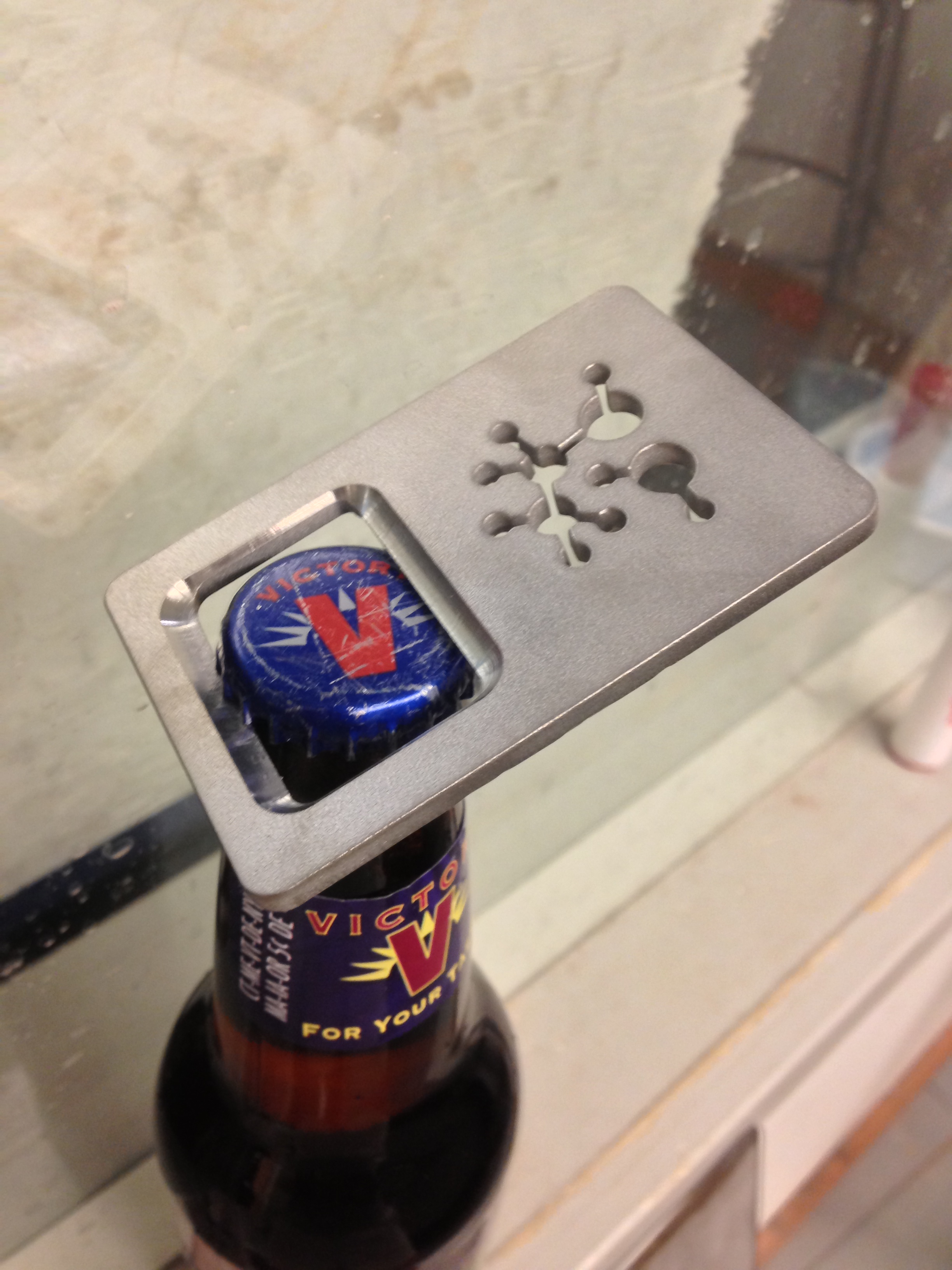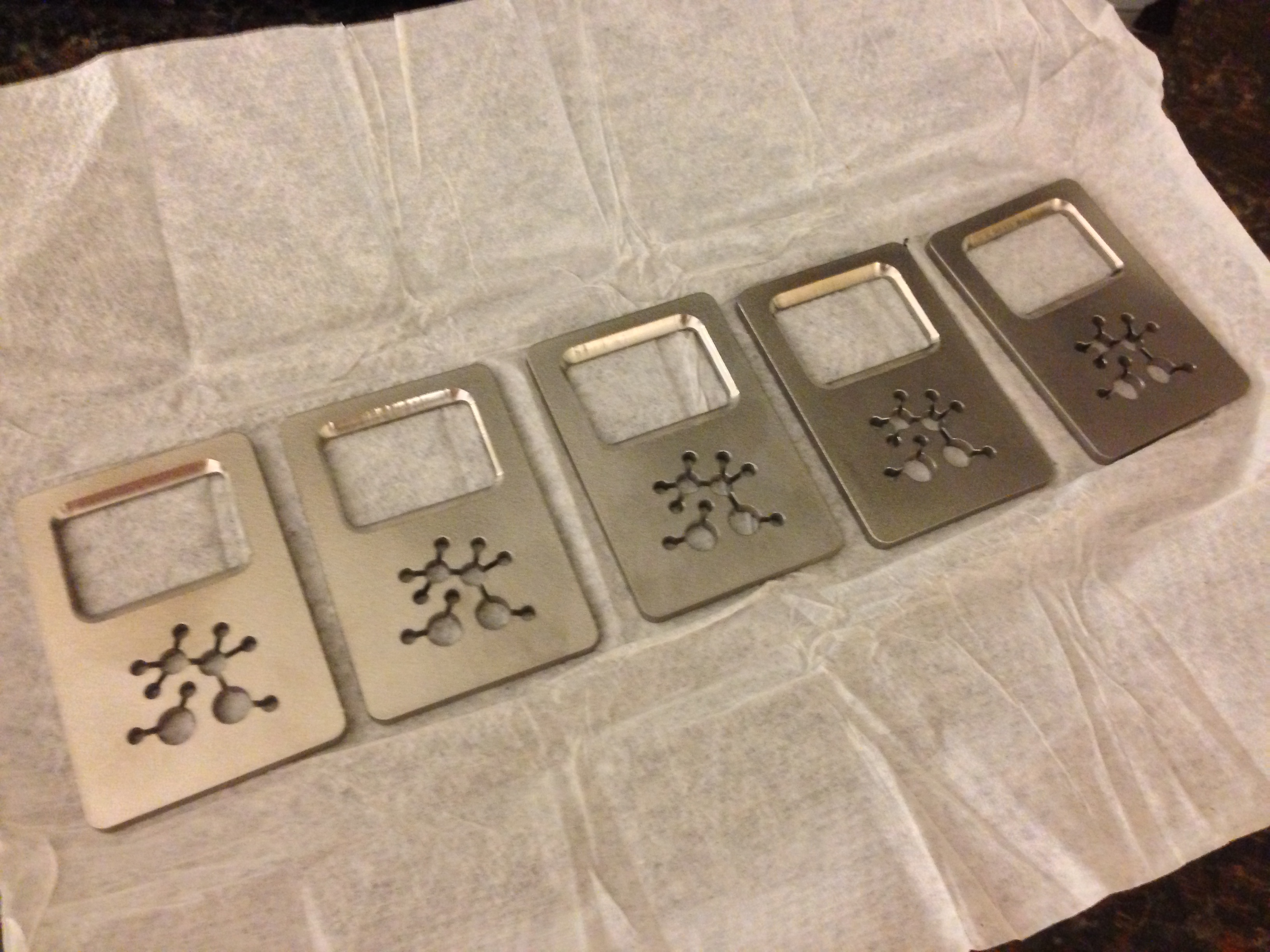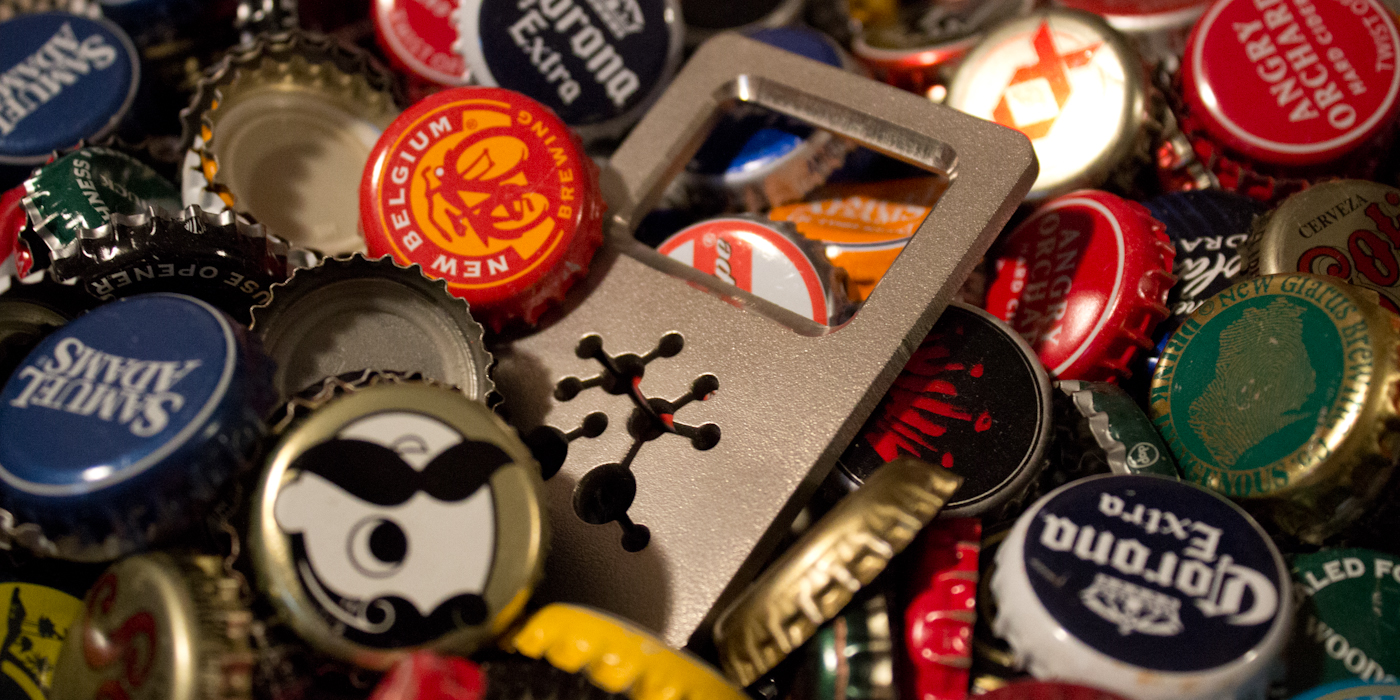close
No-Bend Bottle Opener
A stainless steel bottle opener that doesn't crimp the caps
bolt Rapid PrototypingAs part of our “Build-a-Brand” project during my training program at Anheuser-Busch, we were tasked with creating branded packaging and promotional items for the launch event. Bottle openers were a natural choice for the event and something I’d been wanting to design for a while. Aside from being aesthetically attractive, I wanted to create an opener that wouldn’t crimp the bottle caps. From an experiental perspective, there’s something very satisfying about the caps just “popping” off.
Figuring out the mechanics to make this happen was pretty straightforward. Most bottle openers function as second-class levers, with the fulcrum centered on the bottle cap and the output under the near edge of the bottle cap between the hand and the fulcrum. When pried upward, force is applied at the edge of the bottle cap and the cap creases at the fulcrum and loses its seal with the bottle. To eliminate crimping, I simply moved the fulcrum to the far edge of the top of the bottle cap. With the support of the lip of the bottle directly beneath this point, the cap won’t crimp, although it will take slightly more force to open without the assistance of the cap deformation.
With the mechanics figured out, the rest of the design process was pretty straightforward (and very time-constrained). Keeping things simple, I went with a size and shape similar to a credit card, to be cut from sheet metal stock. Since the openers would be handed out to top executives at the company, I selected thicker stainless steel stock to provide superior rigidity, a nice weight in hand, and long-term durability. As the necessary cutting operations were all in 2D space, a waterjet cutter made perfect sense. After mocking up the design in Inkscape, I exported the cut file as a .dxf, and found a friend with access to a student shop.
After cutting out the first few openers, I discovered that the thicker stock was actually a little too thick to get under the edge of the bottle cap on bottles with tighter crimps or irregular neck profiles. With a few quick measurements, I pulled together a jig, and milled out half of the material thickness around the opener’s functional geometry using a ball end mill. To finish things off, I hit each opener with a wire wheel buffer to bring the surface to a nice marbled sheen. Our final project presentation went great, and the openers were such a big hit that a few execs were pocketing extras to share with friends.
